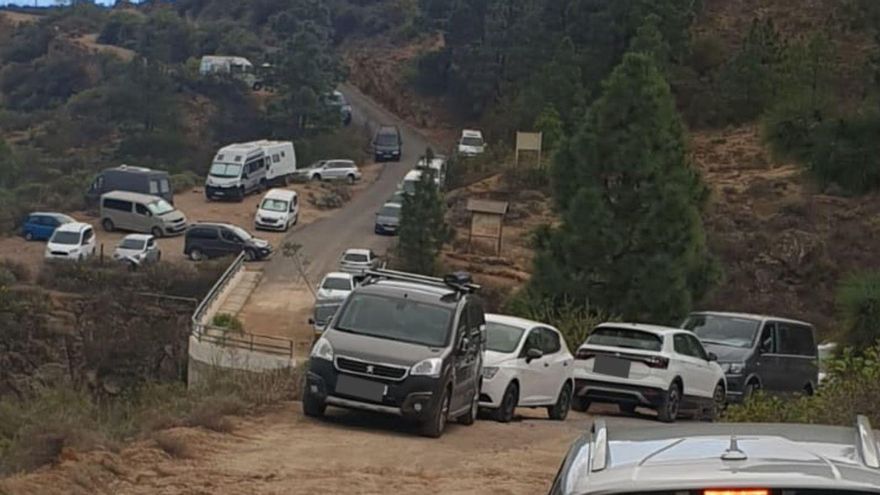
Enrique Fox, Climbing member of the Insular Federation of Mountaineering of Tenerife (FIMT), transmits “the maximum concern” for the situations that are experienced in unique places of the high areas and summits of the Island, many converted into “highly stressed areas » by human presence, attitude and activity. As an example he cites the Barranco de Ortiz, in Arico, “the most popular climbing area in the Canary Islands,” the experts write.
One of them, Fox, assures that Barranco de Ortiz “is one of the most popular sports climbing schools, since it covers a very wide range that goes from fourth to eighth grade, giving game to people who want to start”. This FIMT member points out the overcrowding of the environment as a consequence. And he begins to list some of the “many problems” that the massive presence in natural spaces entails. The first “improper behavior” that breaks the harmony between sport and nature is noise. It comes in the form of screaming, “often”; or through the “inappropriate use of musical devices.” In addition, the presence of “pets swarming everywhere” is frequent.
AND
cars.
The “popularity” of the Barranco de Ortiz among those who practice climbing is confirmed by the presence of “the large number of vehicles that approach it every weekend.” This fact causes “an adverse impact and disproportionate pressure on the environment.” Enrique Fox’s description of the situation is eloquent: “Drivers looking for parking at all costs and damaging the surrounding vegetation, invading private property and disrupting coexistence with neighbors. To this we add disrespect and consideration towards others, such as blocking the exit of parked vehicles, with the owner having to search the entire ravine for the person who has inconsiderately parked badly.
But there is one aspect that raises the level of concern: «Technical ignorance, due to not having gone through training processes in a sport as high risk as climbing, means that people are not able to see the potential dangers». Fox explains that Arico is a school that has more than 30 years of history and that it is “in a slow process of refurbishing.”
AND
Deterioration.
It states that the anchors and, above all, the hangers deteriorate and wear out, and may even break. “Ignorance or lack of ethics means that some climbers do not put their own material on the drops, passing the rope directly through the ring, causing the successive passes of dirty ropes loaded with earth particles to accelerate the deterioration of the metallic material.”
AND
Decalogue.
Given all this, the FIMT recommends that groups access the ravine in a single vehicle; do not leave it occupying the road, so as not to hinder the passage of those used by farmers; no camping in privately owned orchards; do not hinder other cars already parked; do not yell, control the dogs and do not play music, because the noise disturbs the fauna and harms its reproduction; respect the flora, take a detour but do not break the plants; do the business at the ends, bury them and take the toilet paper in a bag; if you mount a top-rope (climbing modality), put a safety carabiner or two straps with their weighted carabiners and do not pass the rope directly through the ring; and using a brush and lightly cleaning the edges when going down, the excess magnesium is becoming a problem, Fox concludes.
















